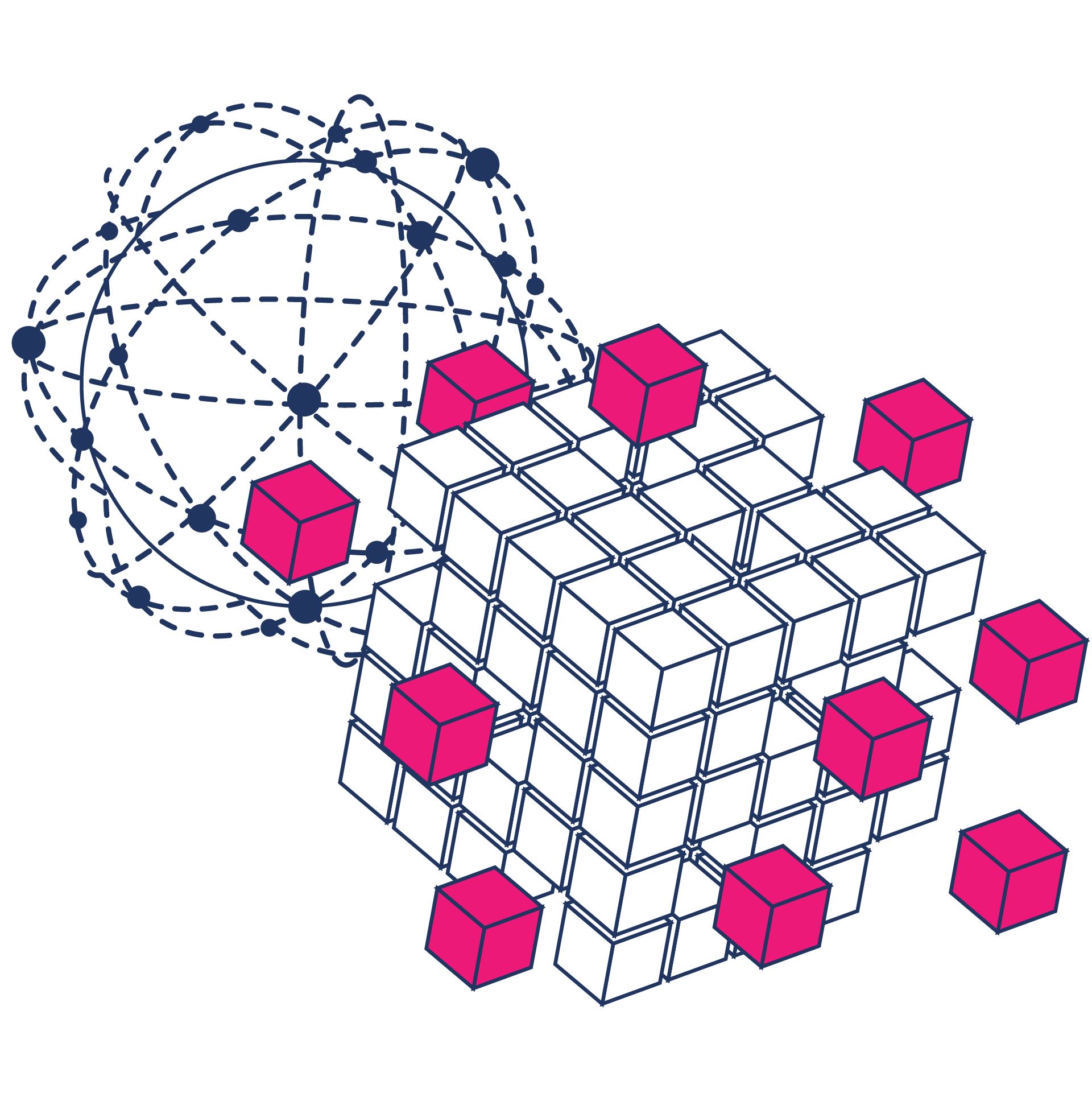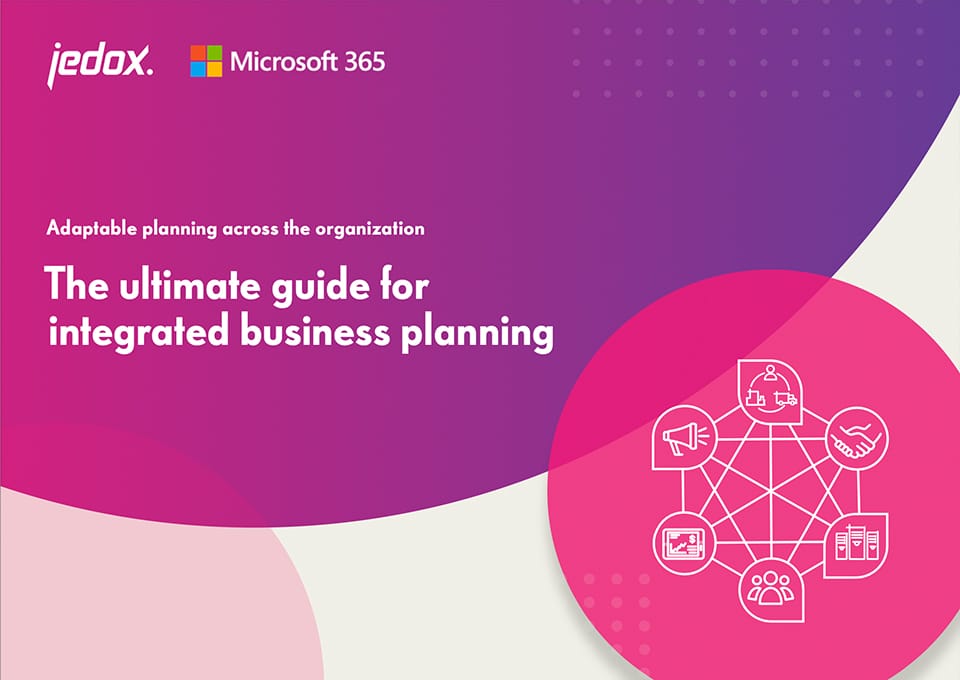
Behind the digital transformation mindset
With so much ongoing buzz around AI-based solutions in business planning, what can we expect to change in the coming years for the aluminum industry? More importantly, how will we be required to change with it?
By 2023, organizations across all sectors are predicted to invest close to $6.8 trillion in digitalization efforts. The initial reason for this push is obvious: automation of business operations leads to higher accuracy and saves time. Zeroing in on the nuance of these motivations, however, can tell us a much more detailed story – one that can help us discern effective targets to aim for when undergoing the digital transformation process.
Because businesses are made up of many variables, ensuring that any upgrades you make are worth the investment requires consideration of more than just the result. To discover what will work best for your manufacturing business, there are a few questions that will help shed light on some of the overall aspirations that drive the digitalization mindset as well as a few of the biggest foreseeable challenges that can hinder maximum potential. By exploring these facets of such sizable business decisions, gauging where your company lies in the process will become clearer. This assures your organization can take confident and decisive next steps.
Why are so many going digital?
The digital transformation journey is already underway in countless businesses around the world. It is on even many more executives’ minds who, for many valid reasons, have yet to execute their plans to embrace digitalization. In fact, 72% of over 1,300 manufacturing executives that were surveyed by BCG in 2022 have said they consider advanced analytics to be more important now compared to how they felt just three years prior. With continually increasing uncertainty, this change in outlook has happened – and continues to happen – at an extraordinary pace.
Depending on the size and maturity of your company, you have probably considered going digital because operations have simply become too complicated and dynamic to sustain them manually. Perhaps they have even started to occur at a larger scale. Such cases necessitate technological solutions, not just for profit, but simply to keep the motor running.
Others may find that their goals are standing just out of reach and just need to find the right stepping stool. This is true even for many who have already started their digital journey. McKinsey’s latest Global Survey provides us with a reliable framework for where attention in the transformation process should be given. The greatest loss of maximum potential benefits when undergoing a digital transformation occurs most often in the implementation stage. Understandably, fear of making costly mistakes is why many are still seeking useful guidelines to achieve transformation and optimize value creation across the enterprise.
In addition to these motivations, another major impetus for digitalization is harnessing the power to face unpredictability. Businesses have had to make peace with the fact that supply chain disruptions aren’t ending any time soon. For example, among some of the top supply chain threats manufacturers are expected to face in 2022 are demand unpredictability and supplier risks and delays. To address the difficulties that companies are facing regarding planning and forecasting, many have begun to implement AI-based solutions for these reasons alone.
The Case of Heiniger
Heiniger, a leading metalworking manufacturer focused on high-quality animal sheering equipment, faced a challenge in its sales planning due to scattered data and cumbersome manual, repetitive processes. In the span of a mere eight weeks, Heiniger implemented a mobile-based data integration solution that both digitized its sales planning efforts as well as allowed multiple departments to perform self-service analysis with instant mobile access to customer data any time of day or night. Their seamless sales planning process has greatly reduced time while supporting improved profitability.
What’s on your digital transformation checklist (so far)?
Clearly, optimization of time management and accuracy of data is one of the main driving forces that has drawn so many towards automated solutions. Some may strive for more robust collaboration potential between departments by improving lines of communication between decision makers and those with necessary information. Other times, businesses may prioritize flexibility in decision-making when daily fluctuations influence their large-scale operations. These motivations are inextricably linked to each other, particularly in optimizing the ability to collaborate with accurate, real-time data. From this angle, we can observe how taking an integrated approach to building your digital transformation checklist can be beneficial in the search for a solution that will lift your company’s operations and improve business performance.
Whatever may be sitting on your checklist as of today, ask yourself how these goals coincide with each other. In doing so, you may discover that the digitalization process does not necessarily require dramatically expanding your resources. Quite the contrary, it may even unveil new ways of condensing existing systems or processes. The advantage to this method is, of course, augmenting the power of the resources you already have without having to trade valuable, straightforward usability for those who will be transforming alongside the company itself.
Will your solution be ‘one-size-fits-all’ or something more personalized?
Unique circumstances come with unique demands. In addition to the external factors that influence the day-to-day operations of your business – think supply chain disruptions, for example – there are just as many internal factors that should be considered as you are making the digital leap. Your industry, type of workplace – whether it is a traditional office space, completely remote, or often, a hybrid of the two – and all the personalities and skill sets that make up your workforce are some of the key determinants in deciding how best to move forward in the digital transformation journey.
The Case of Steinert
Consider the success of Steinert, a leading mechanical engineering firm in magnet and sensor sorting solutions. As the world’s only full-range provider of sorting and separation technologies, they needed to undertake a more granular search for ways to accommodate business growth. Recognizing where operations became increasingly more complex, they set out for a new method of monitoring a wide range of long-term projects that require close, accurate supervision. With the implementation of a new, integrated solution that can draw from a centralized pool of data, Steinert’s management accountant can now adapt to new business developments swiftly and independently. By seeking to replace unnecessary complexity with an easy-to-use integrated system, they were also able to increase the speed of their global reporting by five times.
Companies that are diverse in functionality and require vast amounts of flexibility may need to investigate prioritizing accessibility of information that can, in turn, enhance both the output and the experience of its workers. Steinart’s example illustrates how taking a personal inventory and developing deeper awareness of your unique situation can lead to simplicity without sacrificing sophistication. One-size-fits-all models for automated solutions can absolutely serve an adequate role in business enhancement and should be considered as part of the transformation process. Once your company is enabled by the gains it has already made, then it may be time to reassess if more fine-tuned updates are necessary to meet your needs.
Feeling stuck in the digital transformation process?
For those that have already waded into the waters of technological advancement and have found themselves treading in the deep end, it is important to reevaluate the perspectives that have informed their transformation journey. While this sounds like you may want to know what is going on at the top, oftentimes it is the opposite. You need to look at your processes bottom-up.
A common stumbling block businesses encounter in the digital transformation process is prioritizing power over implementation. To reiterate, McKinsey’s Global Survey has indicated that the implementation phase is where most of the maximum potential benefit is lost. Without understanding the human cost of implementation, e.g., the time and effort required of all workers who will be using the new systems, there will be additional roadblocks that delay or minimize success. The carrot dangling in front of us can block what is up ahead if we don’t take a holistic approach to systemic change.
If companies are singularly focused on day-to-day output as opposed to the big picture, they may discover not long after implementation that the new tools are not as intuitive as they thought for their users. This means that for any company-wide changes, it is important to prioritize user-friendly options that are, at the baseline, easy to navigate and learn. Not only will this approach lead to the immediate gains that one expects with automated processes but ensure smooth business continuity during the transformation.
Any progress is still progress
At times it can be overwhelming not only to parse out what solutions are out there, but also which of the many options offer the greatest value-add Sometimes it is important to take a step back and remind us that planning for something as wide-ranging as a complete digital transformation takes time and requires patience. Discussing is progress. Research is progress.
The results from the McKinsey Global Survey reflect this truth very well. It reports that companies experience success in correlation with the number of actions that comprised its transformation process, not by following a specific subset of actions. Such a finding should empower executives to take any plans they have for change out of storage and bring them to the forefront of their business planning. By extrapolating personal insights from this list of questions, you can feel confident exploring new terrain in your digital transformation journey, with no hiking gear required.
Orienting your company’s mindset towards digital transformation through even the smallest steps you can take will bring you closer towards adaptable and scalable processes that simply your business complexities. The hype and buzz around digital transformation may try to push you in specific directions. Delve into a personal inventory of what is benefiting your company today and what will add value tomorrow. Those answers will be what successfully advances your digital transformation journey.
Christian Ritter is the Regional Vice President, Channel for Jedox, Inc., an award-winning provider of Enterprise Performance Management solutions. With more than 20 years in supply chain and technology, he brings a unique expertise to helping organizations understand how to achieve a culture of decisiveness and confidence and outperform expectations again and again.
This article was originally published in Aluminum International Today.




